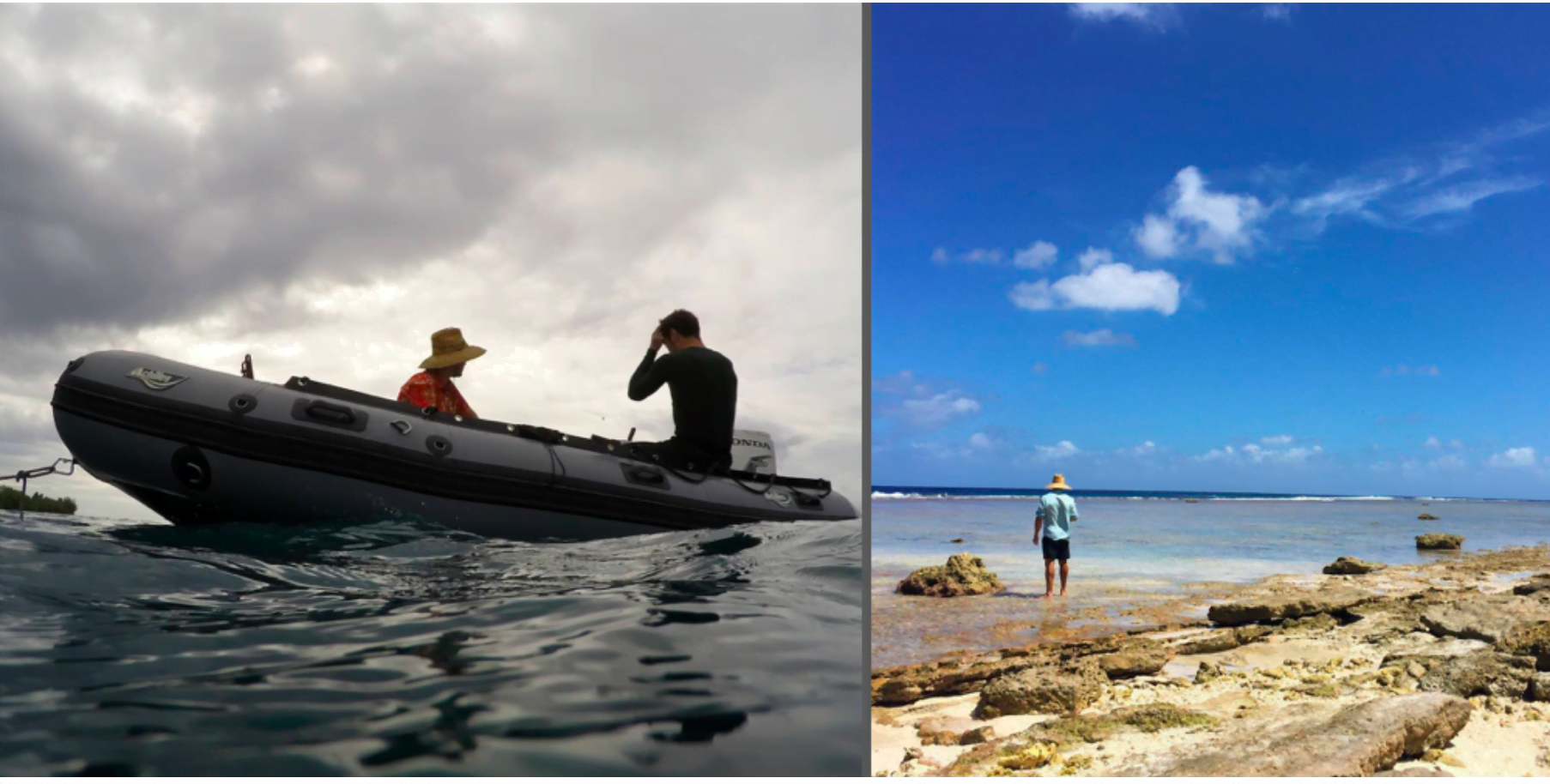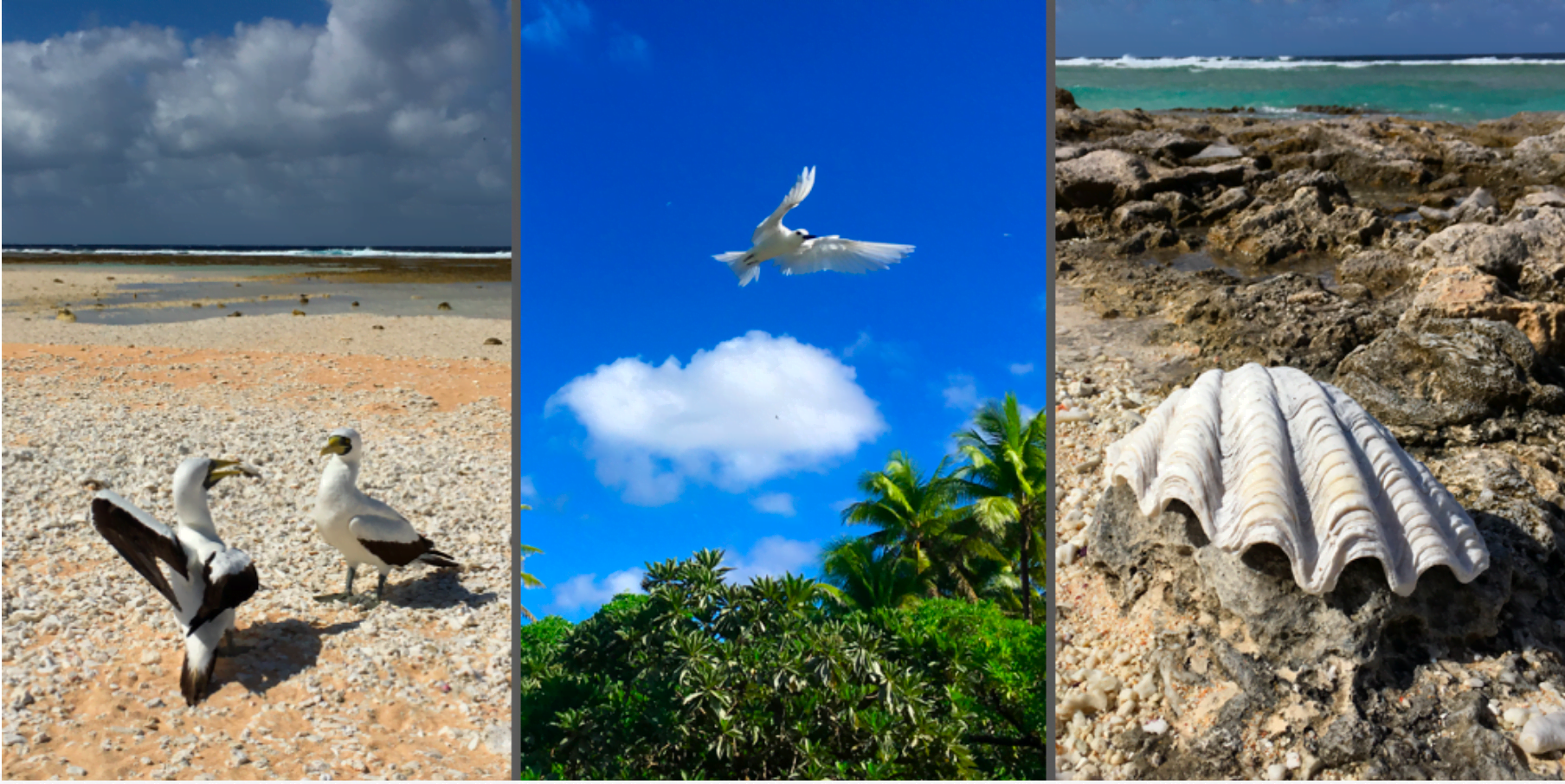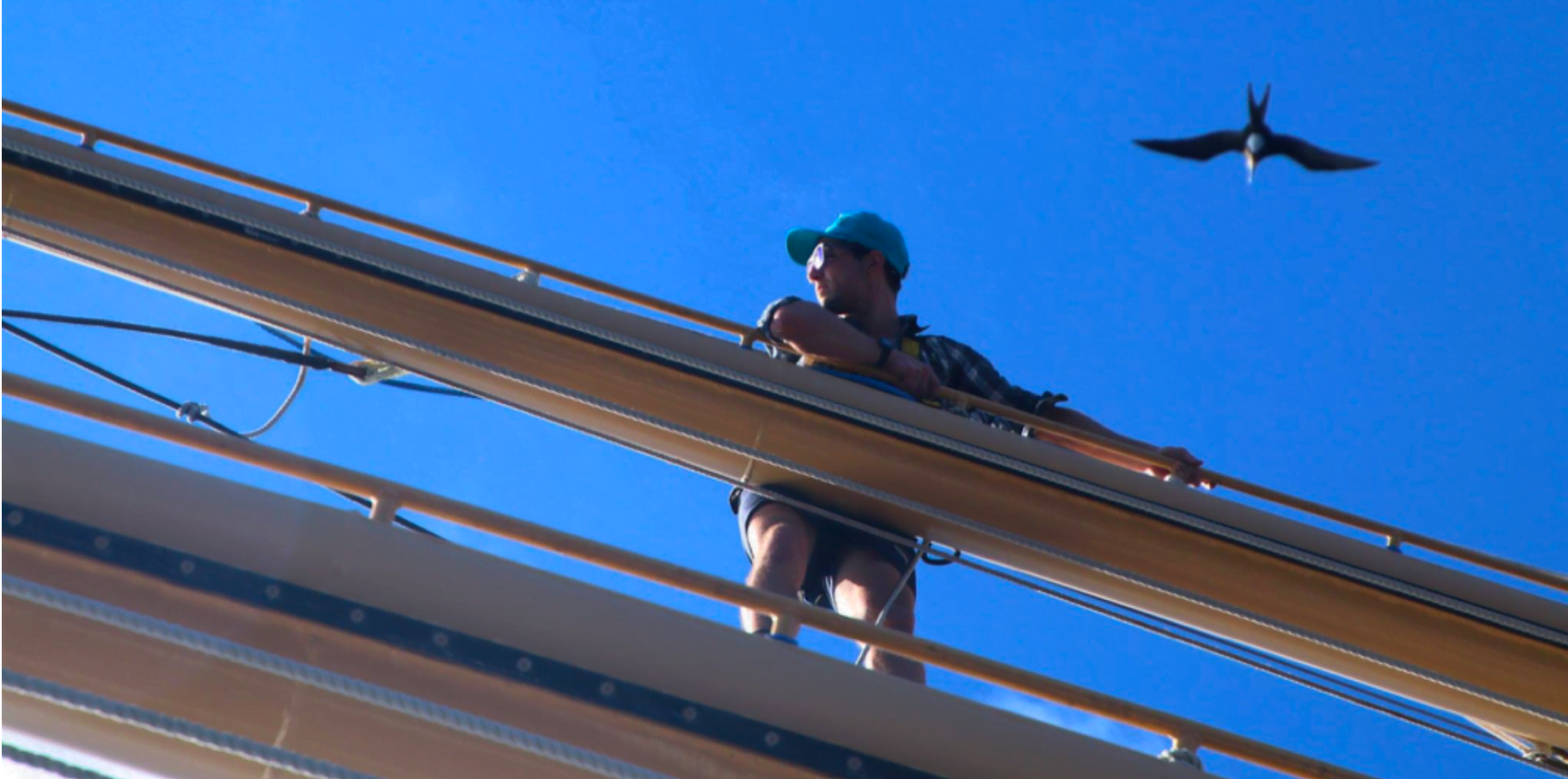Marooned for a Day on the Amelia Earhart Crash Site… it’s not what you expect
Guest Post by: Nick Mendoza, Founder & CEO of Neptune Snacks
Nikumaroro is one of the wildest places left on the planet. On the island, I encountered thriving seabird colonies, eels lunging like crocodiles from the lagoon-edge to drag crabs off of the sand… I even faced-off (and backed down from) a terrier-sized coconut crab encountered on a jungle trail. But forget all of that—something else I saw on that island stays with me today, and affected the course of my life.
The first time one lays eyes on a place like Nikumaroro, the inevitable thought is some version of “we truly have reached the ends of the earth”. Our voyage was a research transect through The Phoenix Islands Protected Area (PIPA), in the island nation of Kiribati [pronounced Kee-ree-bas].
For the expedition, Sea Education Association had obtained a rare permit to collect some very rare data in PIPA—the world’s second largest marine reserve after the Ross Sea in Antarctica. With a full-on research agenda and several island stops slated for the expedition, there were plenty of reasons to be excited about the cruise plan (which included a stop at Millennium Atoll, shown below). The allure of Nikumaroro Island, though, and anticipation to step into the Amelia Earhart mystery was palpable amongst the crew.


Think about the furthest you’ve ever been from civilization. 100 miles? 500 miles? The Pacific Ocean is about 12,000 across at its widest—4X the size of the US—and Nikumaroro is a speck right out in the middle. It’s no wonder so few have laid eyes on the remote Atoll. The question stirring our minds was did Amelia?
For those unfamiliar with the story, it is believed that the renowned aviator, Amelia Earhart, might have crash landed on the dry reef of this island after running off-course from her planned route to Howland Island, some 500 miles to the northwest. Aerial photos of *possible* landing gear on Nikumaroro and triangulated radio transmissions support this theory.
As recently as 2020 and 2021, press-generating expeditions to Niku have continued, but fail to turn up Amelia, her plane, or closure to the mystery that has captivated the public for nearly a century. Spoiler: our visit didn’t surface any clues to the Amelia Earhart mystery, but I believe I found a more important story on those sandy beaches, and one that has not yet been told in the press. Keep reading.

On arrival in the morning, I had the good fortune of being on the first lifeboat ashore. The only beach access on Niku is a narrow coral groove, just wide enough for an inflatable, but given the tide, it was determined that swimming the channel would be safest. Moments after I leapt from the boat and started for shore, I heard the raft’s outboard sputter and then the message on the radio, “Headed back to the ship to check out an engine issue.” Unexpectedly marooned, I spent the day wandering the fabled island alone, in search of its mysteries.

The nature was raw and amazing. Blue-footed boobies on the beach barely batted a wing as I passed by. In the lagoon, blacktip reef shark pups circled my feet, investigating me before gliding off in search of a more appetizing meal. Underwater, the thriving coral and giant clams glowed with phosphorescent zooxanthellae (tiny, colorful plant cells that live in the tissues of most corals). Goliath coconut crabs were the one utterly terrifying thing I encountered—mostly because, in flip flops, I was keenly aware that these armored basketballs were faster and stronger than me, and they seemed aware of their alpha status on Niku. Lastly, the aforementioned white moray eels leaving the water to hunt on the beach. Seriously?? That sight felt like something out of Jurassic Park, even for a marine biologist (*P.S. I’ve still not come across documentation of that behavior anywhere, to date).

It was when I reached the North side of the Atoll that Nikumaroro revealed something I needed to see. It was something that became a repeated narrative on the other protected islands we explored on the expedition. Here, at the ends of the earth, in the center of a marine protected area the size of the United States, there were abandoned fishing nets, buoys, and floats along with lighters, bottles, and other plastic debris. A woman’s shoe lay on the sand. Amelia? Nope. Rubber sole, made in China. When I saw a shark in the pristine lagoon with a hook jutting from its mouth—here, in the beating heart of this marine protected area—something changed deep inside me.

I believe that the seas hold the key to sustainably feeding the planet for the next 50, 100, 1000 years. It’s the reason I dedicated my life to understanding both global fisheries and sustainable aquaculture (i.e. the farming of regenerative marine resources), which has become the fastest growing global food industry. Our seas are in peril, but fishing isn’t the problem. Illegal, unreported, and unmonitored fishing is the problem that allows a flow of seafood from socially-inequitable and environmentally-destructive sources to land straight on your dinner plate.
The seas have a tremendous capacity to produce healthy, sustainable food without consuming freshwater or agricultural products, but we have mismanaged our marine resources for the last half century, and time is running out to correct our wrongs. There are incredible models of healthy, science-based fisheries out there, as well as many regenerative forms of aquaculture. Society just needs to make a collective decision that this should be the standard in our food system, and we should accept nothing less.

After PIPA, I had several weeks of sailing to ponder lessons learned in the Central Pacific before the expedition concluded in American Samoa. By the time we made land, I had decided to leave research science. Research plays an important role in helping us to understand the natural world, and it can make important suggestions for preserving it. However, the power to turn those suggestions into meaningful change is in the hands of each and every person that ‘casts a vote’ with their daily purchasing decisions.
The seafood industry has long been a black box of poor information. Even well-meaning consumers are either left struggling to understand what’s ‘good’, or avoiding seafood entirely because of the confusion or misconceptions. In reality, you’d be hard-pressed to find a more sustainable food on earth than a wild or farmed seaweed, and there is no animal protein that compares to sustainable fish in terms of resource efficiency. If we can fix the ills of recent decades and restore a healthy relationship with the ocean, the future is Blue!
It wasn’t easy to leave my career to begin the entrepreneurial journey with Neptune Snacks, but building a team and products with the mission of “Restoring Humankind’s Healthy Relationship with the Sea” has always felt right. We seek to set an example with traceability, verifiably sustainable sourcing, minimization of food waste, and a product that is really, truly good for our oceans. We can have our fish and eat them too. It just takes mindfulness. This is a story that must be told, and we’re humbled to spend every day telling it.









